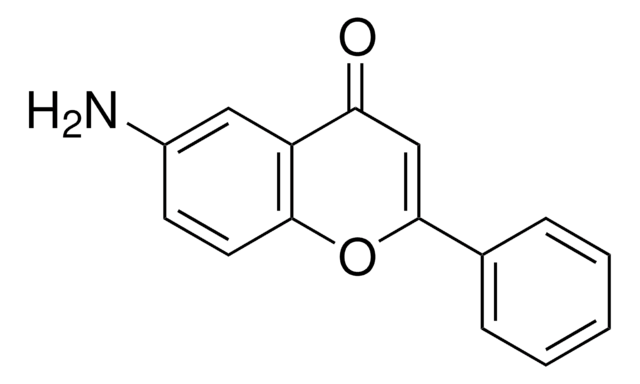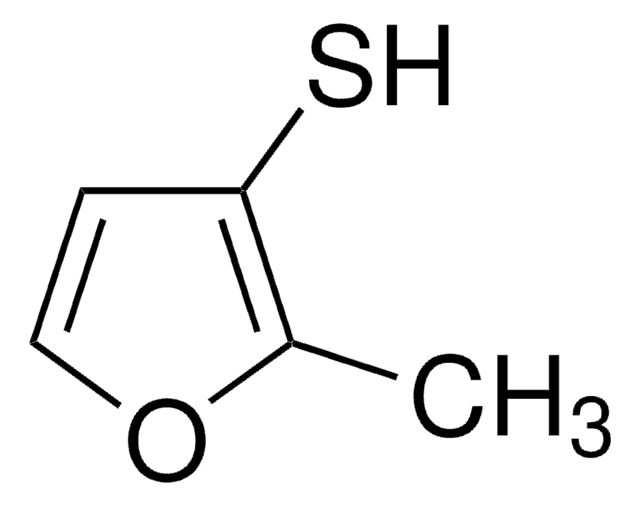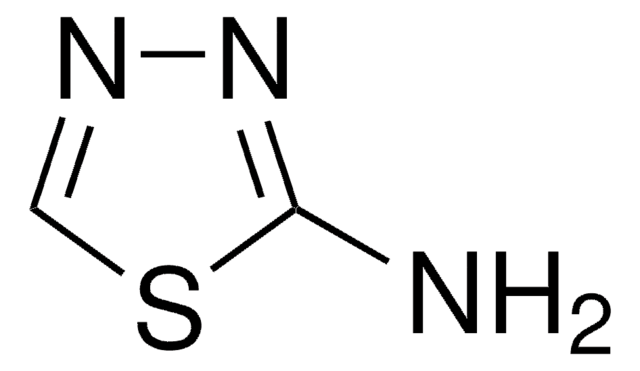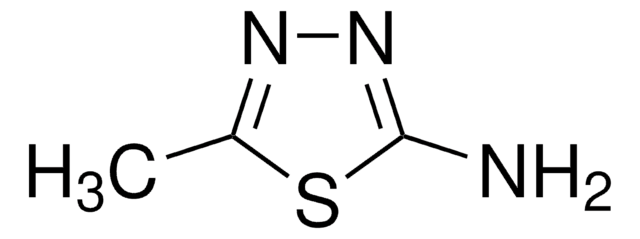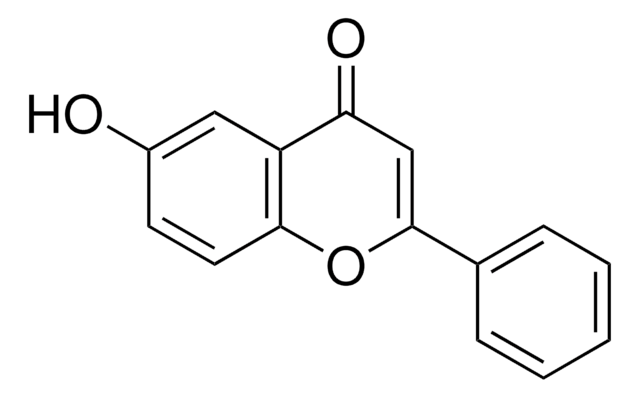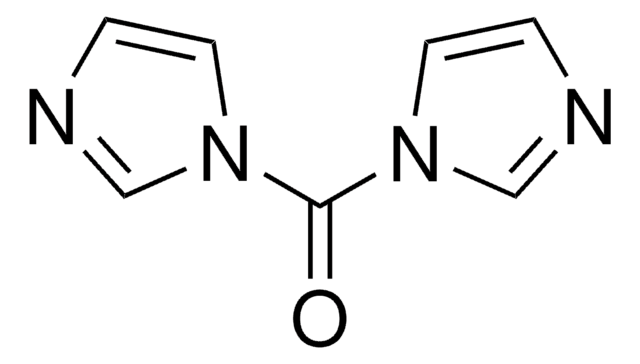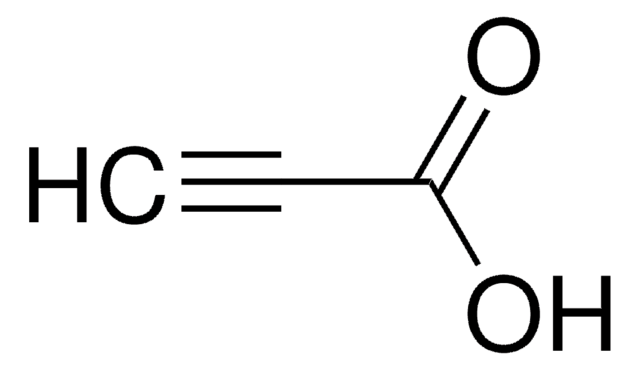633267
Dicyclohexylcarbodiimide solution
60 wt. % in xylenes
Synonym(s):
N,N′-Methanetetraylbis[cyclohexanamine], DCC, NSC 30022, NSC 53373, NSC 57182
About This Item
Recommended Products
reaction suitability
reaction type: Coupling Reactions
concentration
60 wt. % in xylenes
refractive index
n20/D 1.503
density
0.898 g/mL at 25 °C
SMILES string
C1CCC(CC1)N=C=NC2CCCCC2
InChI
1S/C13H22N2/c1-3-7-12(8-4-1)14-11-15-13-9-5-2-6-10-13/h12-13H,1-10H2
InChI key
QOSSAOTZNIDXMA-UHFFFAOYSA-N
Application
Coupling agent for generation of graphene and graphene oxide sheets supported on silica
Endophytic bacterium L14 biomass inhibitor
Used to produce:
- Multifunctional aqueous nanocrystals stabilized by hyperbranched polyglycerol
- MnO2 nanosheets attached to Au nanoparticles on carbon nantubes
- Functionalized single-walled carbon nantotube arrays
Signal Word
Danger
Hazard Statements
Precautionary Statements
Hazard Classifications
Acute Tox. 3 Dermal - Acute Tox. 4 Oral - Aquatic Chronic 3 - Asp. Tox. 1 - Eye Dam. 1 - Flam. Liq. 3 - Skin Irrit. 2 - Skin Sens. 1 - STOT RE 2 Inhalation - STOT SE 3
Target Organs
Central nervous system,Liver,Kidney, Respiratory system
Storage Class Code
3 - Flammable liquids
WGK
WGK 3
Flash Point(F)
86.0 °F
Flash Point(C)
30 °C
Personal Protective Equipment
Choose from one of the most recent versions:
Already Own This Product?
Find documentation for the products that you have recently purchased in the Document Library.
Customers Also Viewed
Our team of scientists has experience in all areas of research including Life Science, Material Science, Chemical Synthesis, Chromatography, Analytical and many others.
Contact Technical Service
